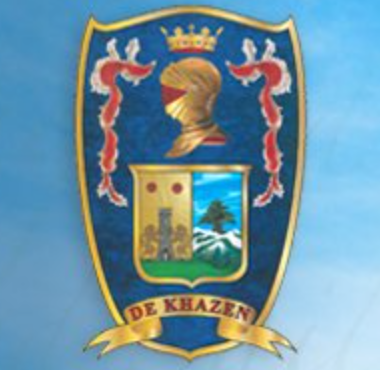
This site is dedicated to the Christian Maronite el Khazen family in Lebanon. Its recorded history in Mount Lebanon dates back to the sixteenth century. For over three centuries, the el Khazen family had been involved in Mount Lebanon’s politics under Ottoman rule as well as with the Maronite church and the Roman Catholic church.
Members of the el Khazen family ruled large districts in Mount Lebanon, notably during the Ma’ni and shihabi Imarah, and maintained close ties with Amir Fakhreddin II (1572-1635). The most notable figures during that period were Sheikh Abou Nader el Khazen and his son sheikh Abou Nawfal, who was also Consul of France in Beirut in 1655 and, after his death, members of his immediate family for nearly a century, and Consul of Venice in 1675.
Moreover, the el Khazen family was particularly involved with the Maronite church. Over the centuries, family members established monasteries, built churches, and created religious endowments (Awqaf), especially in the kisrawan region from the 18th to the 20th century. Family members also donated properties to Eastern Catholic Churches and religious orders, notably the Armenian Catholic church (in Ghosta and Bzommar), the Syriac Catholic church (in Daraoun), and the Greek Catholic (Melkite) church (in Zouk Mikael and Harissa). The first Jesuit missionaries arriving in Mount Lebanon in 1656 were initially assisted by Abou Nawfal el Khazen, who donated land to build a school in Aintoura (later run by the Lazarists). Among the clergy serving the Maronite church were three Patriarchs: Youssef Dergham el Khazen (1733-1742), Toubia el Khazen (1756-1766) and Youssef Raji el Khazen (1845-1854), in addition to seven Bishops and hundreds of monks, nuns and priests. The last surviving monastery, established in the 1830s and currently run by the family, is located in Zouk Mikael, in addition to over fifteen churches.
In post-1920 Lebanon, nine members of the el Khazen family were elected to the Lebanese Parliament, three were cabinet ministers, and several others held senior posts in government and the armed forces. Prior to the formation of the State of Greater Lebanon in 1920, the struggle for independence led to a clash between the Ottoman authorities and local nationalists. The Ottomans responded by hanging several leading political activists. Among them were the two el Khazen brothers, Philippe and Farid, writers and journalists, who opposed Ottoman rule and were put to death in 1916, along with other Lebanese and Syrian martyrs. Another prominent figure in the 1920s was Sheikh Youssef el Khazen, prominent writer and Member of Parliament. He established a newspaper (al-Bilad), and reissued another newspaper (al-Arz), after having founded another daily in Cairo (Egypt), where he lived for nearly two decades prior to his return to Lebanon toward the end of the first World War.



